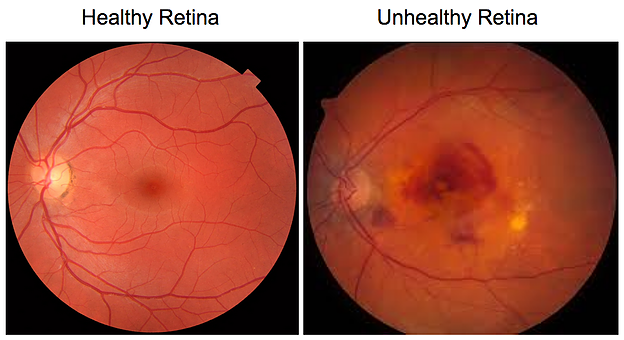
Many diseases affect our eyes without any symptoms or warnings. These diseases can be detected and managed by your eye doctor before they damage your anatomy. Thus, it is essential to have your eyes checked regularly. Your optometrist uncovers the following issues most often:
-
Dry Eye: When someone cries, tears form by the tiny glands that surround the eye. Dry eye happens when the tiny glands (tear films) become unstable, so the glands produce less tears than normal. This causes redness, watery eyes, pain, grit, and fluctuating vision. It often affects women more than men, and can be treated with eye drops or in more serious cases, minor surgery.
-
Glaucoma: Glaucoma causes vision loss gradually over time and becomes more apparent in patients 50 and older. Glaucoma causes an increase in pressure within the eye that can cause damage to the optic nerve. Symptoms include eye pain, blurred vision, and reddening of the eye. Regular eye check-ups with your optometrist will help monitor changes in eye pressure. Treatment includes oral medications, eye drops, and in some cases, laser eye surgery.
-
Cataracts: Ever look through a fogged-up or frosty window? Well, that’s what your vision is like when you have a cataract. Cataracts develop over time and cause cloudy vision, making it hard to read or see things normally. Getting cataracts is very common as you get older (often 60+ years old), and typically not very severe. With a simple outpatient cataract surgery, your cataracts can be removed and your vision restored to normal. Delaying a cataract surgery would only make simple day-to-day activities bothersome because it would be hard to see clearly, but it wouldn’t cause any damage to your eyes.
-
Macular Degeneration: Macular Degeneration causes vision loss and affects a large population of Americans. The back of your eye (the retina) begins to deteriorate, so the images you see are harder to recognize because the connection between the eye and the brain (optic nerve) isn’t able to do its job well. Reading, driving, recognizing faces and colors, all become harder to do. Macular degeneration is more prominent in older patients, and unfortunately there isn’t much treatment available yet. The best things you can do include protecting your eyes from the sun, dieting and exercising, and avoiding smoking.
-
Ocular Allergies: Ocular allergies are simply “eye allergies.” Although allergies differ patient to patient, the symptoms are relatively the same. Common symptoms include redness, itching, swelling, and sometimes pain. Ocular allergies affect some of us year round, but for some lucky folks, the pain is only seasonal. Eye doctors can prescribe medicine or eye drops to make the allergies less bothersome.
-
Diabetic Retinopathy: Diabetic retinopathy is essentially diabetes in the eye. It’s a very common condition in patients who’ve had diabetes for a large part of their life. Patients with diabetic retinopathy will experience blurred vision and/or vision loss. Vision loss is caused by having too much sugar in your blood, which can cut off the blood supply to the back of your eye (the retina) and can hinder new blood vessels from growing. Laser treatment and careful monitoring of your diabetic diet can help treat this condition. Regular eye exams are also important because your optometrist could catch the diabetic retinopathy before symptoms are apparent.
The eye diseases listed above are only 6 of the most common issues eye doctors find in patients. The importance of regular eye exams cannot be stressed enough. With some diseases, there are no apparent symptoms, and if an eye doctor doesn’t have the opportunity to detect a problem, then nothing can be treated. Avoid vision loss and make regular appointments with the doc a priority!


